Triceps Muscle Pain
Introduction
Triceps muscle pain, Soreness or irritation can be due to a variety of reasons. One of the most common of such is a muscle tear. It can either be micro tears leading to a painful range of motion or larger tears leading to limited mobility of the muscle.
The triceps is a big and only muscle on the posterior aspect of the upper arm. Its prime function is the extension of the elbow joint. Since this is a frequently used movement, it is subjected to pain and discomfort.
Apart from the muscle belly, the tendons might also injure, leading to pain in the back side of the upper part of the arm. This may include inflammation of the tendon better known as tendonitis or chronic painful tendon due to overuse of repetition activities without proper treatment or rest, termed as tendinopathy. Sometimes, in severe cases, the tendon might also rupture in accordance to force and this might involve surgical intervention.
The triceps is the only muscle on the posterior side of the arm, which starts from the collar bone and shoulder blade, and ends in the humerus.
In this article, we will cover all the typical causes of triceps muscle pain, their symptoms, treatment options, and physiotherapeutic intervention for triceps muscle pain.
A variety of issues might lead to triceps pain. A few of them are explained below.
Overuse or overexertion of the triceps muscle
Reason
- This happens when one uses the muscle repeatedly without proper rest or warm-up.
- It happens because inadequate warm-up or overloading of muscle causes microtears in the muscle fibers.
- It is common in weight lifters, after a new workout regime without a proper warmup, for people involved in shoveling or digging like farmers, entertainers involved in shows like throwing axes or knives, or professional athletes like gymnastics, cheerleaders, etc.
Sign and Symptom
It is represented by dull throbbing pain all over the muscle in all activities. That is, it pains even while flexing the elbow or relaxing the muscle and extending the elbow, or contracting the elbow. Sometimes the pain is followed by inflammation.
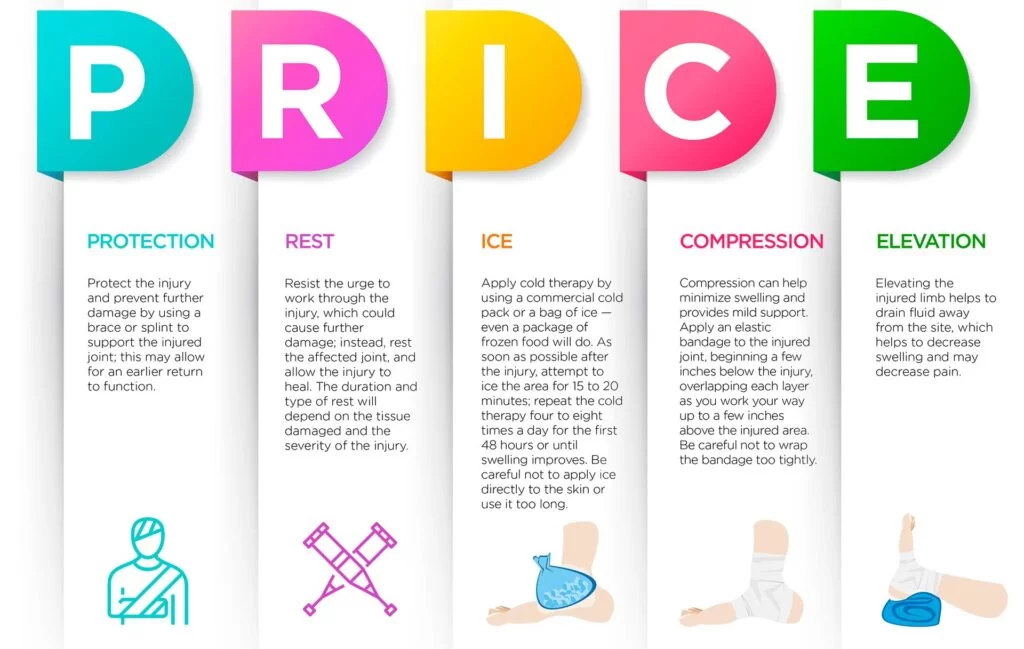
Treatment
- Is treated usually by protection, rest, ice, compression, and elevation (PRICE) protocol.
- The muscle is protected from further injury by keeping it in a sling or using it as little as possible to provide the necessary rest.
- If inflammation is present, ice is applied periodically for 24-72 hours. Ice not only decreases inflammation but also acts as a local analgesic its numbing feature reduces pain.
- The muscle could be kept on a compression bandage for some duration to prevent further inflammation and control micro bleeding caused by the micro-tears.
- Over-the-counter pain killers might be used in case of severe pain.
Recovery
- Generally, it takes about 2-5 days for the pain to reduce and to return to normal function.
- Care should be taken to not overload the muscle and thread gradually further by encompassing the stretching and strengthening regime in the daily workout as prescribed by the sports trainer or the physiotherapist.
Please note that if pain increases or the pain is accompanied by any sort of numbness or tingling sensation in the upper arm, or if the pain is radiating below the arm, it is advisable to check in with a doctor.
Triceps strain
Reason
- It happens when the muscle is suddenly overloaded.
- It usually happens when carrying heavy weights or performing activities against resistance. For example forceful elbow extension or while suddenly lowering a heavy weight.
Sign and Symptoms
- Unbearable pain during or followed by an extreme exercise regime or forceful activities.
- The aggravating factor includes extending the elbow against resistance.
- The strains are typically graded into three grades and depending on the grades, the pain can vary.
- If it is Grade 1, there might be pain followed by slight inflammation. The person might be able to extend the arm with painful sensation either throughout or in the end range.
- In Grade 2, the pain worsens followed by immediate inflammation. The person would only be able to slightly extend the elbow.\
- Grade three is followed by a snapping sound where the tendon is completely ruptured. In this, the person is seen cradling their arm to not cause any movement. The pain is followed immediately after injury with sometimes uncontrollable swelling.
Treatment
- This usually depends on the grade of the injury.
- If it is grade 1 protection, rest, ice, compression, and elevation (PRICE) protocol followed by over-the-counter pain killers and anti-inflammatory can be used.
- For grade 2, initially, protection, rest, ice, compression, and elevation (PRICE) protocol followed by temporary limiting the muscle in either cast or sling can be used. It usually follows with a period of immobility followed by rehabilitation.
- For grade 3, more usually than not surgically method is preferred. The torn muscle fibers are sometimes accompanied by damage to vasculature. Also, as a high force is required for this type of tear, it is either due to violence or trauma which might include additional injuries.
- Followed by surgical management, the person has a period of immobility, then rehabilitation which includes stretching of the triceps muscle, progressively loading the muscle, and returning to daily activities with proper precautions.
Recovery
- Depending upon the grades, severity, and pain intensity, the treatment duration might change for a person with a triceps muscle strain.
- Grade 1 takes 7-10 days with strength training.
- Grade 2 takes somewhere between 2-4 weeks followed by strength training 2-4 times a week for 2 months at least.
- Grade 3 takes 3-6 weeks to heal followed by strength training 3-5 times per week for 2-3 months.
Tendinitis and tendinopathy
Reason
- The term tendinitis means inflammation of the tendon and tendinopathy is used for chronic painful tendons.
- It usually happens due to overuse injury or repeated movements.
- The tendons cannot heal themselves and without adequate intervention, tendinitis becomes tendinopathy.
Sign and Symptoms
- Pain and tenderness at the posterior aspect of the elbow while straightening the arm, particularly under resistance.
- The term itis means inflammation and thus the condition may precipitate with some swelling.
- In chronic cases, weakness in the arm might be seen.
Treatment
- Tendinitis can be treated with protection, rest, ice, compression, and elevation (PRICE) protocol along with some painkillers.
- Tendinopathy is a different case as it involves degeneration of the tendon. This is treated initially with the PRICE Principle (protection, rest, ice, compression, and elevation) protocol but with intermittent rest and not absolute.
- Tendinopathy requires medical as well as physio-therapeutic intervention.
- Physiotherapy ensures that the tendon is not further deteriorated, and the healing process ensures smooth and timely progressive loading of the tendon to restore its lost capacity.
Recovery
- Tendinitis might take somewhere between 5-10 days to heal. This should be followed by a short period of strengthening.
- Tendinopathy takes somewhere around 12-16 weeks to heal completely, followed by a longer period of strength training and conditioning.
Tendon rupture
Reasons
- A tendon rupture might be partial or full.
- Partial rupture means some part of the tendon is still attaching the triceps muscle to either the humerus or ulna.
- This usually happens only when faced with extreme forces or in case of trauma.
- More likely it might be from weakened tendon due to tendinopathy, anabolic steroid users, weakened musculature or bone, or some underlying medical condition.
Sign and Symptoms
- This involves sudden unbearable pain followed by a snapping or popping sensation.
- If palpated in the posterior aspect of the elbow, along the olecranon process of ulna, a gap might be felt.
- In case of traumas, bruising might also appear.
- The person would either be unable to extend the elbow or might do so weakly.
Treatment
- Full tendon rupture requires surgical intervention.
- After the surgical repair, a brief period of immobility is advised followed by vigorous physiotherapy.
- Partial tendon tears might or might not require surgery depending upon the percentage of tear, patient’s needs, occupation, and limitation in the movement.
- This can sometimes be treated conservatively by medicines followed by a period of strength training and conditioning.
Recovery
- As mentioned earlier, the tendon rupture occurs either due to physical stress or some underlying medical condition,
- If due to trauma, the tendon might recover in 2-4 months followed by surgery and rehabilitation.
- If due to some underlying medical condition, it depends upon what the root cause is.
Bruising
Reason
Bruising of the triceps muscle usually occurs with high impact forces.
This can happen either due to accidents in high-contact sports or due to acts of violence.
Signs and Symptoms
- The bruise is very visible and might be of blue-black or purplish hue.
- The site is often sore and tender to touch.
- Sometimes it might be indicative of other conditions such as injury to tendon, muscle, or bone.
- The humerus fracture and total rupture of the triceps tendon were more often accompanied by bruising.
- In case of extreme pain, with pain increasing due to movements, it is advisable to see a doctor.
Treatment
- The treatment option varies depending upon if the bruising is accompanied by something else.
- If it is just a bruising then an ice pack followed by rest might be effective.
Recovery
- This too depends upon what leads to bruising and if it is bruising alone.
- Just a bruise might take somewhere between 3-7 to 10-15 days to recover depending upon the area of the bruise, the pain intensity, and how much muscle is affected.
Differential Diagnosis
There are a variety of other reasons which might lead to or mimic triceps pain but have nothing to do with the muscle or its tendon. Those include,
- Radial nerve injury
- Cervical spine radiculopathy
- Brachial plexus injury
- Cellulitis
- Compartment syndrome of the upper arm
Note – Sometimes the pain in the triceps tendon can be felt in the elbow. A thorough examination must be done to rule out triceps in case of elbow pain.
When to call the doctor for Triceps Muscle Pain?
There are certain situations that require medical attention in case of triceps pain. These include,
- If the pain doesn’t better or has worsened over the span of 4-7 days with PRICE protocol.
- If the pain has radiated elsewhere like the arm or neck.
- If the pain is traveling below the elbow to the forearm.
- If you feel numbness, tingling, or burning sensation in the arm, elbow, or neck.
- If the arm is becoming weakened.
There might be conditions that require immediate medical attention, like,
- A gap along the back side of the elbow.
- Inability to move the elbow without pain.
- Snapping or popping sensation followed by unbearable pain.
Physiotherapy Treatment for Triceps Muscle Pain
Physiotherapy Assessment of Triceps Muscle Pain
A detailed history is taken prior to physical examinations. This includes personal history such as hobbies, lifestyle, eating habits followed by their profession, and at last what they want the outcome to be or what their desired goal is from this visit.
A basic physiotherapy examination includes
- observing the skin for any bumps, discoloration, inflammation, or visible wound
- palpation of the area to check for any discomfort tiny bumps, tenderness over the area, etc.
- muscle strength testing to check the strength of the muscle. Is usually compared to that of the opposite nonaffected arm’s
- range of motion to assess how much and if any movement is restricted. Is usually done with a goniometer.
Followed by a proper history and careful assessment a diagnosis is curated, based on which the physiotherapy protocol starts.
Physiotherapy Treatment
Physiotherapy treatment for triceps pain depends upon certain guidelines and criteria. A few of them are,
- the duration of the injury,
- range of motion limitation if present,
- the intensity of pain,
- any inflammation is present or not,
- what is the current strength of the muscle,
- what was the prior efficiency of the muscle
- how well is the muscle responding to the loading
- Are there any negative effects of the program
- what is the age of the patient
- is the patient suffering from any comorbidities
- are there multiple ailments involved
After careful examination followed by these guidelines, physiotherapists categorize in which phase the patient lies. Typically the physiotherapy treatment first and foremost works on pain management. This is usually done with the use of electrical modalities such as ultrasound, infrared lamp, low-level laser therapy, heat therapy, cryotherapy, etc. Nowadays advanced techniques such as Kinesio taping, cupping, or dry meddling are also to relieve pain and increase the healing process. This period is very short-lived sometimes taking only 24-48 hours.
A lot of time therapist takes pain managmnet in conjugation with the protection phase. The protection phase involves the protection and rests along with pain management. This is made possible either with an immobilization splint or with a sling or brace. This is usually kept for a week to four depending upon the severity of the injury.
This is followed by a period of mobilization, which at first includes basic ROM exercises to get the muscle moving and used to the movement followed by progressive gradual strength training. This may last for 2 months to a year depending upon the site of injury, the severity of the damage, the person’s needs, and whether they are athletes or not.
Let us look at all these phases in detail
Protection Phase – Splinting
Followed by triceps injury or surgery, the medical professional might keep the person’s arm in a protective sling as part of the PRICE protocol. The elbow is kept in 30o– 45o flexion with the forearm in the mid-prone position with the wrist also supported, as shown in the above figure.
Sometimes, if the rest is intermittent, a mobile splint or dynamic splint could be used to allow a certain degree of movement. They allow gravity-assisted grade 2/3 muscle movement which doesn’t overload the muscle.
Patient education is really important here to ensure they don’t overload the muscle and cause further damage. Only gentle stretches are to be followed by gravity-assisted movements.
Physiotherapy Program
Followed by immobilization, the person is guided to do gentle stretches and range of motion exercises. This phase is termed the Early Controlled Motion, which consists of the following exercise,
- passive elbow extension, full ROM
- active and/or active assisted elbow flexion up to the 30 °
- Template splint to facilitate the elbow extension
- Passive forearm rotation with the elbow in extension.
ECM program aids in reducing the pain and swelling followed by the surgery. Additionally, compressive bandages, hand pumping exercises, shoulder flexion, or overhead movements, are started immediately after surgery to reduce swelling and keep the blood and lymphatics moving.
Progressive Elbow Movement
This phase focuses on restoring the normal grade 3/3+ elbow extension. This is achieved by allowing against the gravity elbow extension, preferably completely active rather than assisted.
A few of the common techniques a physiotherapist might use to facilitate elbow extension includes
- Extension PNF of upper limb
- Use of electrical modalities like ultrasound or laser to promote healing
- Myofascial release to mobilize the scar tissue
- Neuromuscular electrical stimulation to assist in muscle contraction and recruitment of motor units in case of neural involvement
- Heating pads or heat therapy to relax the muscle and surrounding musculature
- Manual therapy or movement with mobilization to restore the limited range of motion
Strength Training and Conditioning
This is only started once the muscle gains at least grade 3 muscular movement or can perform active elbow extension.
Typically, the strengthening program starts with isometric triceps contraction, generally with 10-15 repetitions of 5-7 sec hold with 3-5 sets a day. This is upped by either increasing the reps or the hold.
Followed by isometric exercise eccentric contractions are done. They can be done either with body weight like triceps pull-ups or with dumbells like overhead triceps extension or with theraband. There is no clear-cut standard weight or repetition of the exercise. But to be on the safer side, a therapist might start with 10% RM for 10-13 reps of 2-3 sets a day.
This strength training is continued with gradual progression of the overload principle, including specificity, intensity, frequency, and duration with the incorporation of all in day-to-day activities.
Stretching Exercises for Triceps Muscle Pain
Gentle stretching of the muscle more often than not helps to relieve a bit of pain. A few very common and effective stretching techniques are explained below.
Overhead Triceps Stretch

How to perform an overhead triceps stretching?
Can be done either standing or sitting
- Extend the arm to be stretched towards the ceiling with palm facing forward.
- Bend the elbow such that the palm touches the middle of the upper back or in between the shoulder blades.
- Now with the other hand apply gentle pressure to the flexed elbow till a slight stretch is felt along the posterior aspect of the arm.
- Hold the stretch for 15-30 seconds.
- Repeat 3-5 times.
- Extend your right arm to the ceiling, then bend at the elbow to bring the right palm toward the center of your back, resting your middle finger along your spine.
- Use your left hand to gently push your elbow in toward the center and down.
- Hold this stretch for 30 seconds for three to four repetitions on each side.
NOTE – Keep your shoulders and the muscle as relaxed as possible to feel a proper stretch. Do not fret if you couldn’t reach the middle of the back. Just place the hand on the base of your skull instead.
Triceps Towel Stretch
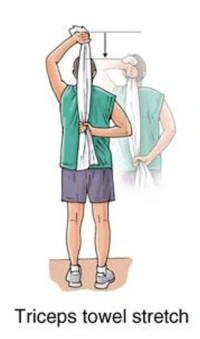
How to perform the triceps towel stretch?
It is an upped version of overhead triceps stretch. One may require a bar, thick towel, or a belt to perform the stretch.
- To perform this, the person can either be standing or sitting on a stool.
- Raise the arm to be stretched above the head just as in overhead stretch, holding the towel, bar, or belt.
- With the other hand grab the end of the towel, bar, or belt.
- With the hand grabbing the bottom end, pull it as far down as possible without feeling pain.
- Hold for 20-30 seconds
- Repeat at least 2-4 times.
NOTE – Open up the chest and roll back the shoulders to feel the deep stretch.
Horizontal Triceps Stretch

How to perform the horizontal triceps stretch?
This stretch is more for the overall musculature in the lateral and posterior compartment of the arm.
- To do this, the person can either be sitting or standing with shoulders relaxed.
- Adduct the arm to be stretched on the opposite side to the shoulder level with the elbow slightly flexed.
- Gently with the other hand, give the arm an extra pull from the elbow.
- Hold this for 20-30 seconds.
- Repeat 2-5 times.
Dynamic triceps warmup
How to perform the dynamic triceps warm-ups?
They’re more of a warm-up exercise than stretching or strengthening
To perform this,
- Abduct your arm sideways such that they are parallel to the ground and your palm is facing the ground.
- Forward the backward shoulder rotations, a count of 10 small and 10 big circles.
- Then rotate the forearm such that the palm is facing up and do little pulses with the arm going up and down; and crossover and again to the neutral position.
- Do these movements for either 15 counts or 20 – 30 seconds, whichever is feasible for you.
Triceps Strengthening Exercise for Triceps Muscle Pain
There are a variety of ways in which triceps muscle could be strengthened. A few of the most common and clinically effective ways are explained below.
Diamond Push-Ups

The diamond push-up is considered the hardest triceps exercise as it needs great upper body strength. The push-ups are performed mostly in variations.
How to perform the diamond push-up?
- To perform this movement lay down on the mat on your stomach. Place the hands under the chest with fingers spread and thumbs and index fingers touching as if to make a diamond shape.
- Now slowly move to the high plank position. Alternatively, you can drop on your knees to make it a bit easier.
- Keep the core engaged and back muscles as flat as possible.
- Lower yourself to the ground by bending the elbow until the chin or chest touches the mat. If this feels too tough, lower yourself as far as you can go.
- Make sure the elbow is close to your body and don’t fan out to the sides while performing the push-up.
- Return to starting position.
- Initially repeat the exercise for 8-12 reps of 1-2 sets and slowly progress by either adding a hold for a few seconds or increasing the count.
Triceps Kickbacks
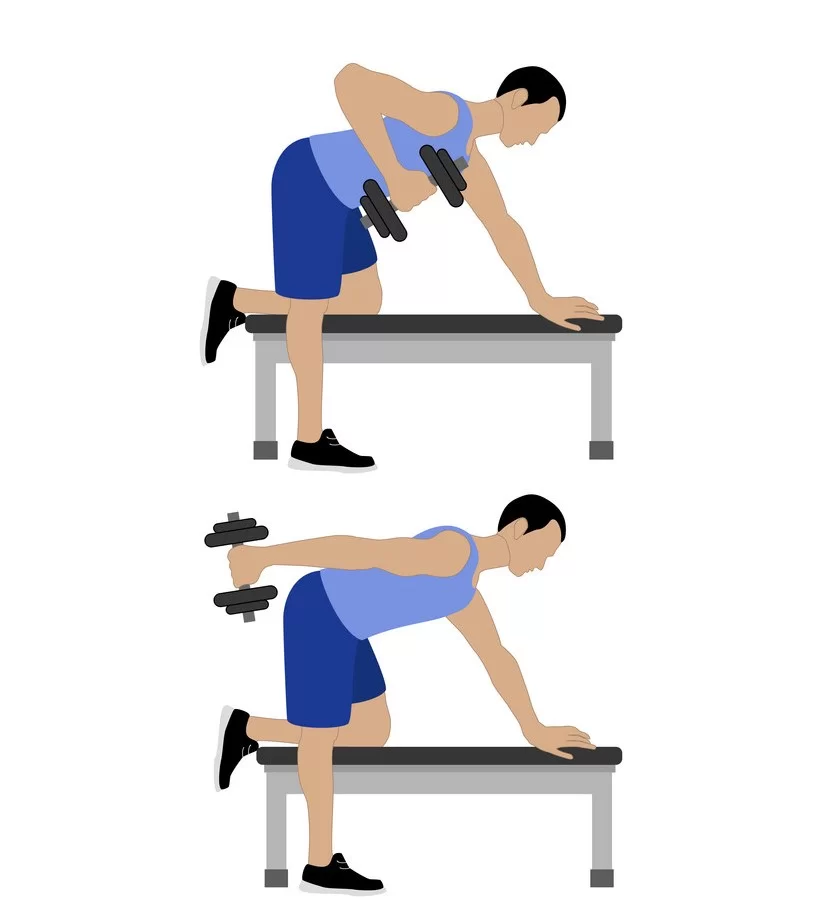
It is estimated to cause somewhere between 85-90% triceps muscle activation. It is an against the gravity movement which increases the load on the triceps muscle.
How to perform the triceps kickbacks?
- Place one leg on a step or raised platform to perform this movement. Rest the forearm of the same side on the thigh of the propped leg to support the back.
- Hold the weight in the opposite hand and raise the elbow to the abdomen
- Maintaining the position, stretch the arm behind you by contracting the triceps.
- Initially repeat for 1 to 2 sets of 8 to 12 reps.
- If during the exercise, it becomes difficult to keep the elbow stable, try to reduce the weight or perform without weight.
Triceps Underhand Kickbacks
By changing the grip of the traditional triceps kickback, we can target the inner aspect of the triceps. This part of the muscle is responsible for maintaining stability.
How to perform the triceps underhand kickbacks?
- To perform this exercise, stand with feet hip-width apart and your knees slightly flexed. The hips should be hinging forward.
- Grab a dumbbell in both hands. Flex your elbow to 90 degrees such that the palms of both hands should be facing upwards.
- You make a supinated grip. Engage your triceps, and extend your arms behind you with your arms fully extended in a straight line parallel to the trunk.
Triceps Dips
Triceps dips can be the easiest or toughest triceps exercise to follow, depending upon which variation is performed. Initially, the exercise is performed in a high sitting position slowly followed by knees bent and then a full knee extension.
How to perform a triceps dip?
- To perform this exercise, sit on a chair with hands gripping the sides just outside of the hips. Knees could either be in bent, half extended, or fully extended position, depending upon the desired intensity.
- Push yourself up from the chair or bench.
- Keeping the hands stable and pelvis and hips as close to the chair or bench as possible, lower yourself to the ground by bending the elbows.
- Make sure the elbows are close to your sides while flexing, the core is engaged and the shoulders are relaxed and not elevated.
- Come back to starting position and repeat for 1 to 2 sets of 8 to 12 repetitions.
- Stop the exercise if any pain or discomfort is felt along the shoulder or shoulder blades.
Overhead Triceps Extensions
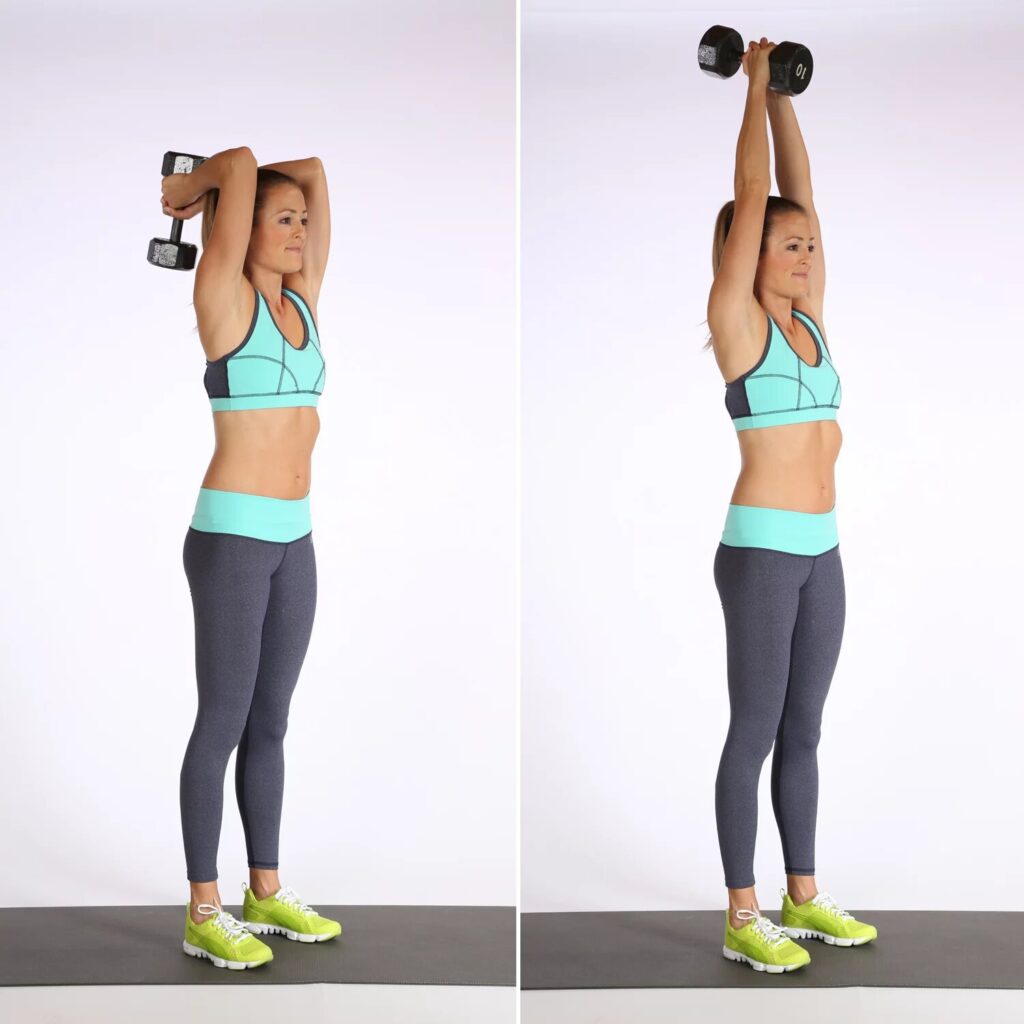
This is the most effective exercise on our list and is said to cause t least 72-77% of muscle recruitment. It is considered one of the easiest and quickest triceps exercises to perform. And is time-saving too as this is a bilateral triceps strengthening exercise.
How to perform an overhead triceps extension?
- This can be done in either a sitting or standing position. The exercise is easiest to do in standing than in sitting as fewer core muscles are engaged in standing. Alternatively, to make this exercise a bit more challenging, sit on an exercise ball to perform it.
- Once in the starting position, grab a weight with both hands by interlocking the fingers over the weight.
- Raise the arm over the head. Make sure to have a good grip on the weight before performing this motion to avoid potential hazards.
- Bend the elbow and lower the weight backward as if dropping it in the middle of the shoulder blades.
- Squeeze your shoulder blades and push out the chest to ensure little to o synergistic movement.
- Make sure to keep your shoulder as relaxed as possible.
- Ensure that your arms are right next to your ears and that the elbows are not fanning out while performing the movement.
- Take caution on lowering the weight slowly and gradually and not letting it fall from gravity.
- Extend the arm and come back to the overhead position.
- Repeat for 8-12 counts for 1-2 sets initially.
- Keep the core muscles engaged throughout the exercise to prevent arching of the back and potential back aches in the future.
- Do this movement for 20 to 25 repetitions for 2 to 3 sets.
Standing Eccentric Triceps Extensions
This exercise may look simple, but it can more utilize your triceps quickly if you move at a faster pace and use more weight, so choose dumbbells mostly.
How to perform the standing eccentric triceps extensions?
- For this exercise, you have to stand with hip-feet hip-width apart with your knees slightly flexed and your hips hinging forward.
- Grab a dumbbell in both hands at the sides by your chest so your elbows are flexed up to 90 degrees and then extend the elbows back out.
- Do this movement for 20 to 30 repetitions for 2 to 3 sets.
Skull Crushers
This is also called a French Press. This exercise emphasizes on entire triceps muscle group through the concentric phase of the movement.
How to perform the skull crushers?
- For this exercise, you have to lie flat on your back on the mat with your knees flexed.
- Grab a dumbbell in both hands by your chest and extend your arms straight up towards the ceiling.
- Slowly lower both arms toward your head down by your sides, and flex your elbows up to 90 degrees.
- This finishes one repetition.
- Come back to the starting position and repeat.
- Do this movement for 15 to 25 repetitions for 2 to 3 sets.
Close-Grip Dumbbell Press
This exercise is similar to the chest press, the closed grip focuses on the triceps instead of the chest.
How to perform a close-grip dumbbell press?
- For this exercise, you have to lie flat on your back on the mat with your knees flexed.
- Grab a dumbbell in both hands by your chest and extend your straight arms up towards the ceiling.
- Press the back to lockout at the top moves.
- Continue to press the hands together as you lower back down with control. This is the first repetition.
- Come back to the starting position and repeat.
- Do this movement for 15 to 20 repetitions for 2 to 3 sets.
Tate Press
The Tate press is mostly performed on a bench at an incline, but you can still get the benefits of this exercise at home, by using a mat. This advanced movement isolates the triceps without recruiting your back or shoulders.
How to perform a tate press?
- For this exercise, you have to lie flat on your back on the mat with your knees flexed. Kind of like a crook lying position.
- Grab a dumbbell in both hands with palm facing forward and extend them shoulder-width apart with the elbows pointing outward.
- Without moving your arms, slowly flex your elbows inside towards the chest so the dumbbells move in and down until they touch your upper chest—but don’t let them rest on your chest.
- Then, engaging your triceps, press the dumbbells up to the initial position.
- This is the first repetition.
- Come back to the starting position and repeat.
- Do this movement for 10 to 20 repetitions for 2 to 3 sets.
Chaturanga Push-Up
This is the classic pose to build upper-body and core muscle strength while increasing your flexibility and range of motion in your shoulders.
How to perform the Chaturanga push-ups?
- For this exercise, you have to take a high plank position with your shoulder directly below your wrist and body in a straight line.
- Slowly lower your body towards the ground while lifting your knee and thighs like you are doing a standard push-up.
- Move your body forward to the top of your feet with your chest forward and arch your back.
- Now roll your body back to a high plank position.
- This is the first repetition.
- Come back to starting position and repeat.
- Do this movement for 15 to 20 repetitions for 2 to 3 sets.
Up-Down Planks
They are more like a full-body workout rather than just triceps. To perform this exercise, good strength in the upper body is required.
How to perform the up-down planks?
- For this exercise, you have to take a high plank position with your shoulder directly below your wrist and body in a straight line.
- Bring your left arm down to a forearm in the plank position.
- Hold for a few seconds and then bring your right arm.
- Then put your left hand on the mat and press back up to a high plank, followed by your right arm.
- This is the first repetition.
- Come back to the starting position and repeat.
- Do this movement for 15 to 20 repetitions for 2 to 3 sets.
Disclaimer
The information in this article is only for educational purposes. Please do not consider this as a substitute for medical advice in any way or form. In case of doubts, kindly contact the health care practitioner for further clarification.
The exercises mentioned are that fit for normal otherwise healthy individuals. It is always advised to connect with physiotherapists, fitness trainers, or sports therapists before starting any new exercise or regime. This is to make sure your body is ready for that particular exercise, would it be able to handle those loads, and the biggest of all, are you performing this exercise correctly, is your posture good, and what other precautions should be taken which is unique to you only. If during any exercise or 24 hours after the exercise, any pain, discomfort, or tenderness is felt that is not gone with rest and ice pack, it is advisable to connect with or seek medical help.
Similarly, while performing the stretches, make sure your body is as relaxed as possible. You only want to stretch the muscle to the point of a slight pull. Caution must be taken to not to overstretch the muscle as that decreases its integrity and strength.

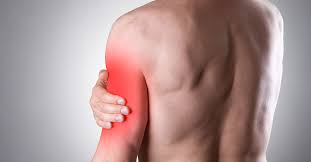
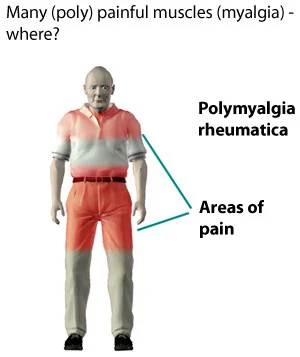

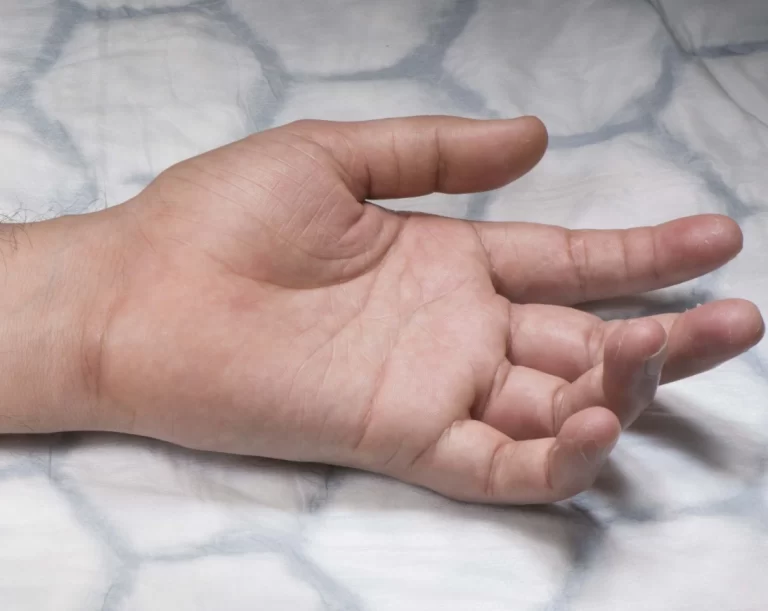
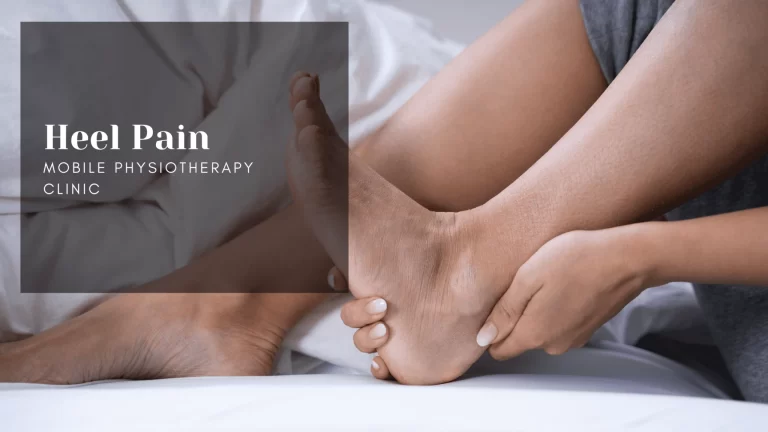
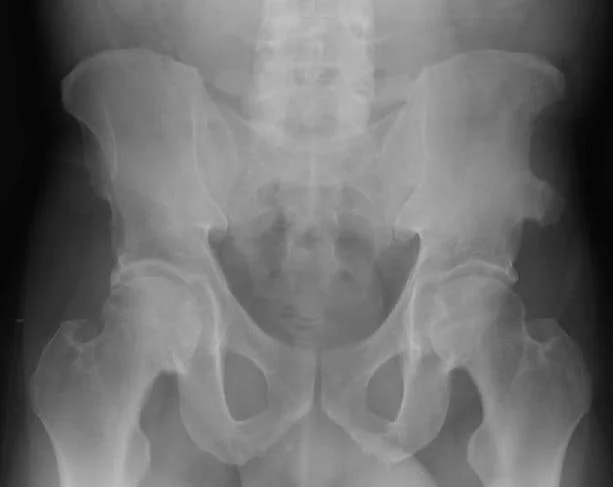

2 Comments